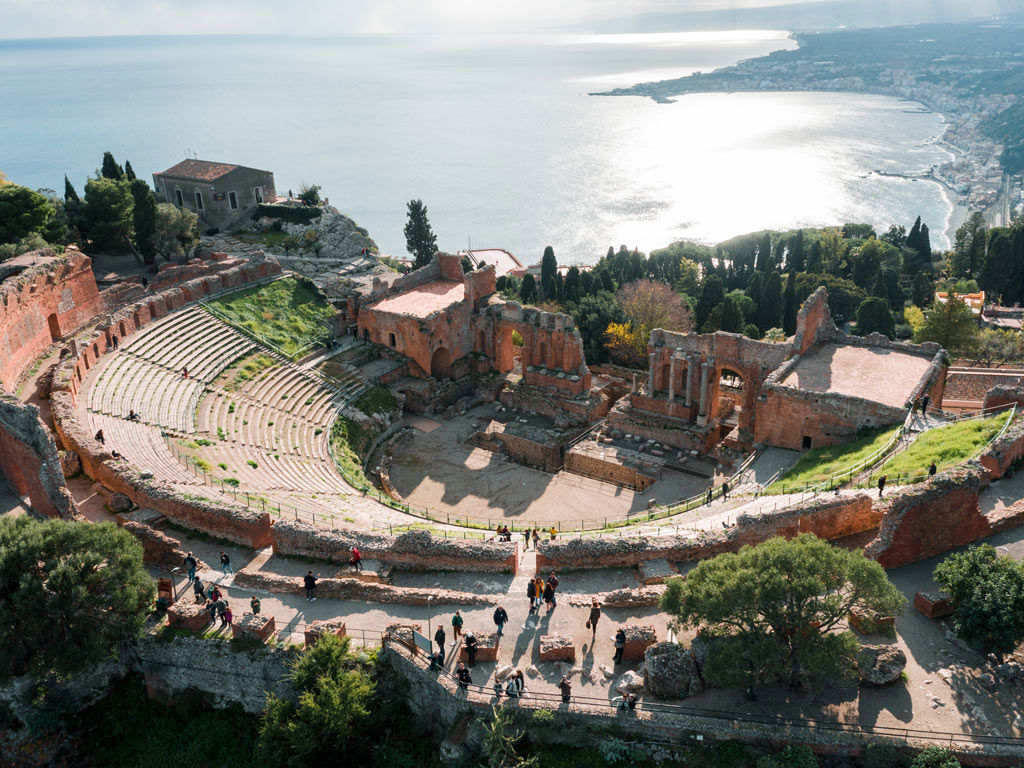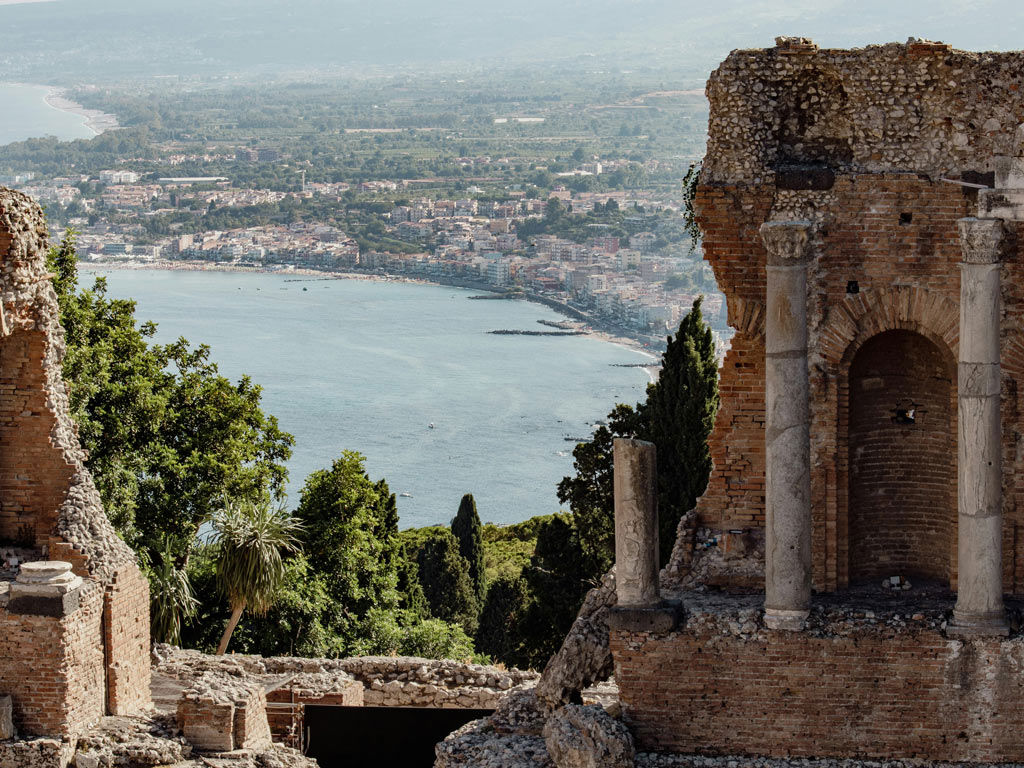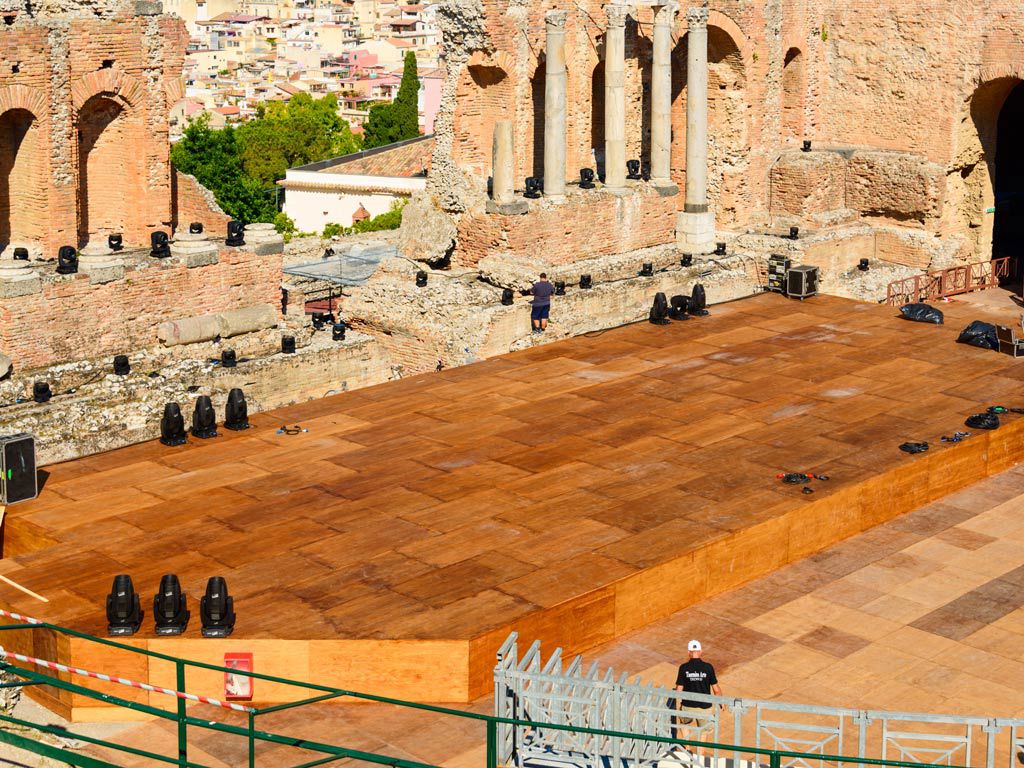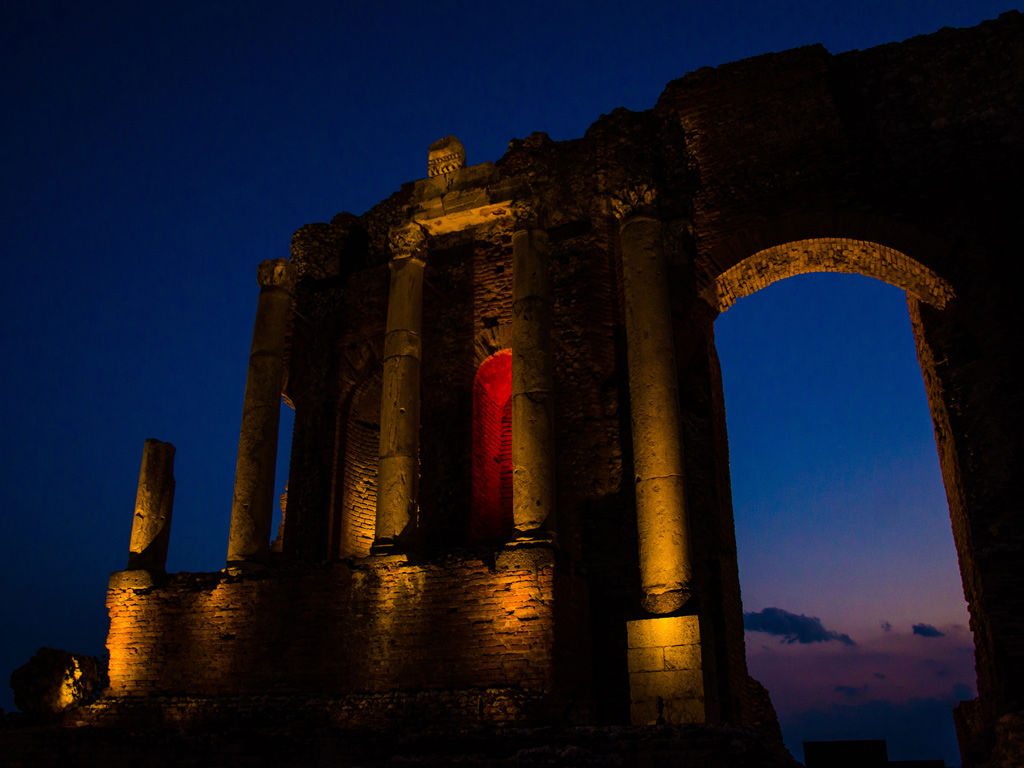

Taormina boasts one of the best-preserved Greek theaters in Sicily, a must-see destination for history and culture lovers. It was one of the stops of young aristocrats during their Grand Tour from the second half of the 1700s.
Goethe dedicated many beautiful words to the Greek Theater in his "Journey to Italy", enchanted by the extraordinary panorama visible from its caeva. There you can see Mount Etna, the Bay of Naxos, and the Strait of Messina.


This ancient theater, second only to that of Syracuse in size and one of the most famous in the world, is the pride of its archaeological site. Archeologists started their long activity probably around the 3rd century BC.
With its original capacity of about 5,400 spectators, now enlarged to 10,000, it hosted dramatic and musical performances in Greek times. Later it changed its use to represent bloodier forms of entertainment such as naval battles, and gladiator and beast fights in Roman times.
After its abandonment with the collapse of the Roman Empire and the conversion of the stage into a private residence during the Middle Ages, it regained some of its former glory through a restoration completed in 1955.

Since then, in addition to being a major tourist attraction in Taormina, the Greek Theater has been used for award ceremonies, national and international artists’ concerts, ancient tragedies and comedies performances, and annual cultural events, such as the Taormina Film Fest and Taormina Arte, which enrich the summer event season.
The Greek Theater is located within a larger archaeological park that also houses a museum and the red-brick Naumachiae.

